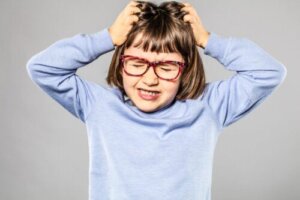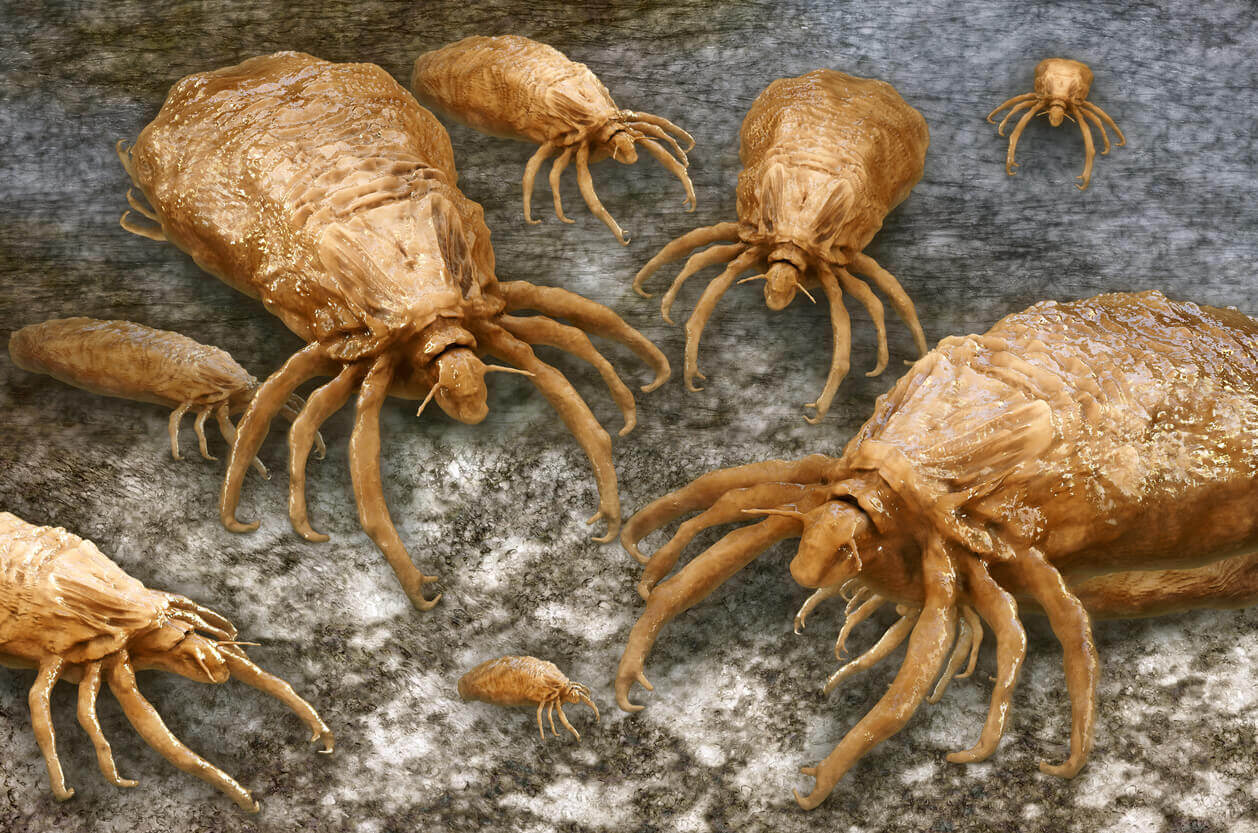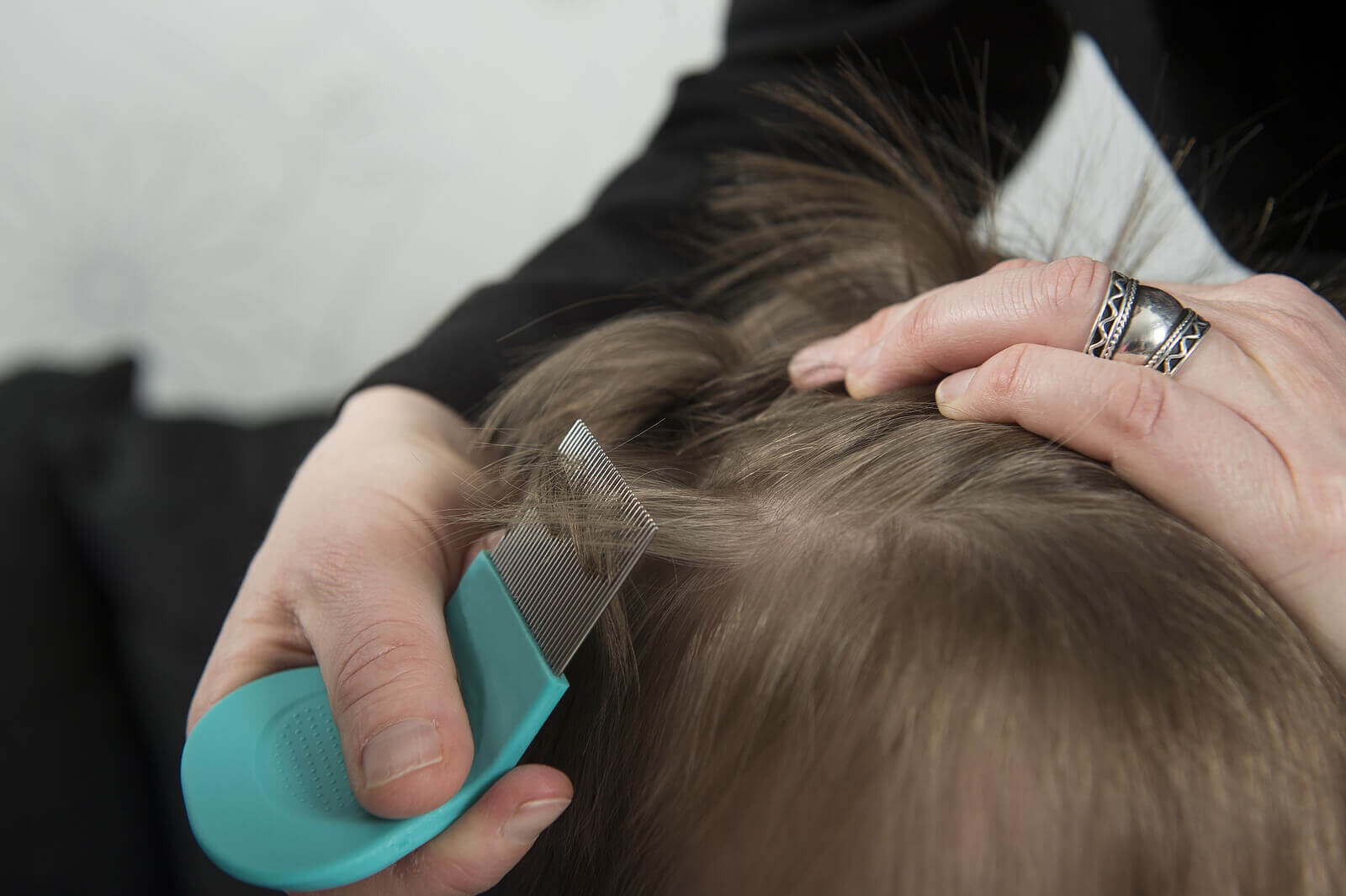Top 10 Questions Parents Have About Head Lice


Written and verified by the dermatologist Maria del Carmen Hernandez
Although head lice infestations are more common in children, they can also occur in adults. What’s more, the manifestations of pediculosis can vary from one person to another.
When it comes to a consultation with their doctor, parents tend to have several questions on the subject, so we’ll answer the 10 most common doubts that parents have about head lice. Stick around!
1. What are lice?
Lice are obligate parasites that depend on humans to live. They spend their entire life cycle in our body and, depending on the area they affect, they’re differentiated into three varieties :
- Pediculus humanus capitis (or head lice).
- Pthirus pubis (also known as crabs or pubic lice).
- Pediculus humanus (or body lice).
Head and body lice are 2 to 4 millimeters long, while pubic lice are much shorter.
2. Do lice fly or jump?
Lice cannot jump or fly and therefore, transmission between two people requires close contact. These parasites have claws that allow them to adhere to the hair strands easily and move quickly from one place to another.

3. Is there a greater impact on girls and boys?
In general, outbreaks of head lice affect infants between the ages of 3 and 12, most often in girls. In fact, small epidemics tend to develop in school settings, because the closest social ties occur there.
The privileged location of head lice is the occipital region and behind the ears, as they’re the warmest areas of the scalp.
Read also: Pediculosis (lice): what you should know
4. Why do lice itch?
Lice infestations involve intense itching, and in most cases, this produces a hypersensitivity reaction. Symptoms can appear 2 to 6 weeks after infection.
Itching (pruritus) is a reaction of the body to the saliva of the louse, and the intensity of this sensation depends on the sensitivity of each person.
It’s important to know that constant scratching, in addition to being annoying, can lead to a secondary bacterial infection due to the superinfection of the lesions caused by the parasite. Consequently, head lice can be associated with some more serious complications, such as pyoderma or impetigo.
5. How are these parasites transmitted?
Head lice are a highly contagious condition and characteristically spreads rapidly from one child to another. In addition, it’s common for cohabitants to acquire it, regardless of their age.
Although contagion by direct head-to-head contact exists, it generally occurs after sharing hats, combs, hair accessories, or towels.
Infestations occur more frequently in the warm months of the year, in areas where there’s a high level of humidity (swimming pools, locker rooms, among others).
6. How are lice removed?
Topical pediculicides are considered the first-line treatments, notably pyrethroids, lindane, topical ivermectin, and malathion.
The best known topical pyrethroid is 1% permethrin. However, the parasite has developed a high resistance to this drug in recent years.
Another very effective removal method is the use of the fine comb on wet hair, as with this element, it’s possible to remove the lice and nits retained at the base of the hair.
7. Are natural or home remedies effective?
The vast majority of home remedies don’t ensure the death of lice or the shedding of nits and there’s no scientific support to support their effectiveness.
Although there’s a belief that certain essential oils or mayonnaise work to eliminate lice and nits, this isn’t recommended.
You may be interested: The 10 most common skin diseases in children
8. Does lack of hygiene cause pediculosis?
Despite the prejudices, pediculosis isn’t an indicator of poor hygiene of the child. According to a publication of the Spanish Association of Pediatrics, meticulous hygiene doesn’t prevent lice infestations.
9. Should the treatment be repeated?
In most cases, a second treatment is required to completely eradicate the parasites. Therefore, it’s best to repeat it 7 to 10 days after the first one.
Whenever pediculicidal products are used, these must be accompanied by manual removal (or with a fine comb) of lice and nits.

10. Are there methods to prevent infestations?
To prevent new infections, it’s a good idea to wash all clothing and bedding used the days prior to treatment. Ideally, do it with very hot water or iron the fabrics after they dry.
In turn, those items that can’t be washed should be placed in an airtight bag for 2 weeks. Also, it’s good to vacuum the furniture, upholstery, and carpets in the house.
Lice are more than just a cosmetic issue
Although lice are a bothersome condition, they don’t transmit any disease nor are they dangerous to the health of children. In any case, when faced with itching of the scalp, it’s important to identify whether it occurs due to this cause or not.
Over-the-counter pediculicides abound on the market, but in general, lice have already developed resistance to them. For this reason, you’re better of going to a specialist doctor to receive the most effective and appropriate treatment for the child.
Although head lice infestations are more common in children, they can also occur in adults. What’s more, the manifestations of pediculosis can vary from one person to another.
When it comes to a consultation with their doctor, parents tend to have several questions on the subject, so we’ll answer the 10 most common doubts that parents have about head lice. Stick around!
1. What are lice?
Lice are obligate parasites that depend on humans to live. They spend their entire life cycle in our body and, depending on the area they affect, they’re differentiated into three varieties :
- Pediculus humanus capitis (or head lice).
- Pthirus pubis (also known as crabs or pubic lice).
- Pediculus humanus (or body lice).
Head and body lice are 2 to 4 millimeters long, while pubic lice are much shorter.
2. Do lice fly or jump?
Lice cannot jump or fly and therefore, transmission between two people requires close contact. These parasites have claws that allow them to adhere to the hair strands easily and move quickly from one place to another.

3. Is there a greater impact on girls and boys?
In general, outbreaks of head lice affect infants between the ages of 3 and 12, most often in girls. In fact, small epidemics tend to develop in school settings, because the closest social ties occur there.
The privileged location of head lice is the occipital region and behind the ears, as they’re the warmest areas of the scalp.
Read also: Pediculosis (lice): what you should know
4. Why do lice itch?
Lice infestations involve intense itching, and in most cases, this produces a hypersensitivity reaction. Symptoms can appear 2 to 6 weeks after infection.
Itching (pruritus) is a reaction of the body to the saliva of the louse, and the intensity of this sensation depends on the sensitivity of each person.
It’s important to know that constant scratching, in addition to being annoying, can lead to a secondary bacterial infection due to the superinfection of the lesions caused by the parasite. Consequently, head lice can be associated with some more serious complications, such as pyoderma or impetigo.
5. How are these parasites transmitted?
Head lice are a highly contagious condition and characteristically spreads rapidly from one child to another. In addition, it’s common for cohabitants to acquire it, regardless of their age.
Although contagion by direct head-to-head contact exists, it generally occurs after sharing hats, combs, hair accessories, or towels.
Infestations occur more frequently in the warm months of the year, in areas where there’s a high level of humidity (swimming pools, locker rooms, among others).
6. How are lice removed?
Topical pediculicides are considered the first-line treatments, notably pyrethroids, lindane, topical ivermectin, and malathion.
The best known topical pyrethroid is 1% permethrin. However, the parasite has developed a high resistance to this drug in recent years.
Another very effective removal method is the use of the fine comb on wet hair, as with this element, it’s possible to remove the lice and nits retained at the base of the hair.
7. Are natural or home remedies effective?
The vast majority of home remedies don’t ensure the death of lice or the shedding of nits and there’s no scientific support to support their effectiveness.
Although there’s a belief that certain essential oils or mayonnaise work to eliminate lice and nits, this isn’t recommended.
You may be interested: The 10 most common skin diseases in children
8. Does lack of hygiene cause pediculosis?
Despite the prejudices, pediculosis isn’t an indicator of poor hygiene of the child. According to a publication of the Spanish Association of Pediatrics, meticulous hygiene doesn’t prevent lice infestations.
9. Should the treatment be repeated?
In most cases, a second treatment is required to completely eradicate the parasites. Therefore, it’s best to repeat it 7 to 10 days after the first one.
Whenever pediculicidal products are used, these must be accompanied by manual removal (or with a fine comb) of lice and nits.

10. Are there methods to prevent infestations?
To prevent new infections, it’s a good idea to wash all clothing and bedding used the days prior to treatment. Ideally, do it with very hot water or iron the fabrics after they dry.
In turn, those items that can’t be washed should be placed in an airtight bag for 2 weeks. Also, it’s good to vacuum the furniture, upholstery, and carpets in the house.
Lice are more than just a cosmetic issue
Although lice are a bothersome condition, they don’t transmit any disease nor are they dangerous to the health of children. In any case, when faced with itching of the scalp, it’s important to identify whether it occurs due to this cause or not.
Over-the-counter pediculicides abound on the market, but in general, lice have already developed resistance to them. For this reason, you’re better of going to a specialist doctor to receive the most effective and appropriate treatment for the child.
All cited sources were thoroughly reviewed by our team to ensure their quality, reliability, currency, and validity. The bibliography of this article was considered reliable and of academic or scientific accuracy.
- Bragg BN, Simon LV. Pediculosis. 2020 Nov 20. In: StatPearls [Internet]. Treasure Island (FL): StatPearls Publishing; 2021 Jan–. PMID: 29262055.
- Meister L, Ochsendorf F. Head Lice. Dtsch Arztebl Int. 2016;113(45):763-772. doi:10.3238/arztebl.2016.0763
- Ko CJ, Elston DM. Pediculosis. J Am Acad Dermatol. 2004 Jan;50(1):1-12; quiz 13-4. doi: 10.1016/s0190-9622(03)02729-4. PMID: 14699358.
- Gairí Tahull JM, Molina Morales V, Moraga Llop FA, Viñallonga Sardá X, Baselda Torres E. Pediculosis de la cabeza. Revisión del año 2006. En: Protocolos de la Asociación Española de Pediatría [consultado en 08/2021]. Disponible en: https://www.aeped.es/sites/default/files/documentos/pediculosis.pdf
- Giardelli M, Larralde de Luna M. Pediculosis y escabiosis. Comité Nacional de Dermatología Pediátrica. Archivos argentinos de pediatría, 2001; 99(1). Disponible en: https://www.sap.org.ar/docs/publicaciones/archivosarg/2001/01_68_74.pdf
This text is provided for informational purposes only and does not replace consultation with a professional. If in doubt, consult your specialist.








